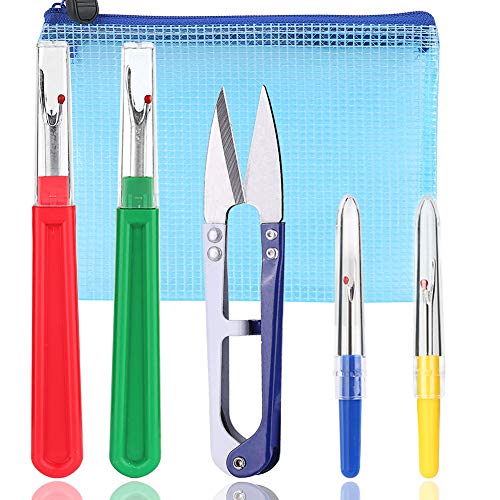Yes, a seam ripper can be used on leather
Leather is a versatile and durable material used in various applications, including fashion, furniture, and accessories. One common aspect of working with leather involves sewing, whether it’s creating a new leather item or making alterations to an existing one. Just like with any other fabric, mistakes can happen during the sewing process, resulting in the need to remove stitches. A seam ripper is a handy tool that can be used to remove stitches in leather as well.
What is a seam ripper?
A seam ripper is a small, handheld tool consisting of a handle and a sharp blade. It is specifically designed to help remove stitches from fabric without causing damage. The blade of a seam ripper is typically thin and sharp, allowing it to navigate through the stitches easily. The opposite end of the seam ripper usually has a small, rounded point that can be used to pick out any remaining bits of thread.
Using a seam ripper on leather
When using a seam ripper on leather, it is important to exercise caution to avoid accidentally cutting or damaging the leather itself. Here are a few tips to keep in mind:
- Choose the right seam ripper: There are different types of seam rippers available, including those specifically designed for heavy-duty fabrics like leather. These seam rippers often have a sturdier handle and a sharper blade, providing better control and efficiency.
- Select the right spot: Identify the stitches that need to be removed on the leather item. Using a pin or temporary marker, mark the spot to be sure you stay on track.
- Apply gentle pressure: When using the seam ripper, it is crucial to apply gentle pressure to avoid damaging the leather. Glide the seam ripper’s blade under the stitch, gently separating the threads.
- Work in small sections: To prevent accidentally cutting the leather, work in small sections, removing a few stitches at a time. This will ensure better precision and reduce the risk of mistakes.
- Test on a scrap piece first: If you are uncertain or haven’t used a seam ripper on leather before, test it out on a scrap piece of leather to familiarize yourself with the technique and pressure needed.
When to use a seam ripper on leather
There are various situations where using a seam ripper on leather can be useful:
- Correcting mistakes: If you make a mistake while sewing leather, such as sewing in the wrong spot, using a seam ripper can help you undo the stitches and start over.
- Altering garments: If you need to alter a leather garment, such as taking in or letting out a seam, a seam ripper can be used to remove the original stitches before making the necessary alterations.
- Replacing hardware: If a zipper or other hardware needs to be replaced on a leather item, using a seam ripper can help remove the original stitching, allowing for the installation of new hardware.
Alternative methods to remove stitches in leather
While a seam ripper is a commonly used tool for removing stitches in leather, there are alternative methods that can be used as well. These methods include:
- Small scissors or thread snips: Small, sharp scissors or thread snips can be used to carefully cut through the stitches in leather. It is important to exercise caution to avoid cutting the leather itself.
- An awl or needle: An awl or needle can be used to loosen and pick out stitches in leather. These tools allow for more precision and control compared to scissors or a seam ripper.
- A stitch remover tool: There are specialized stitch remover tools available on the market that are designed to remove stitches from various fabrics, including leather. These tools often have a curved or pointed blade that can easily cut through stitches without damaging the leather.
In conclusion, yes, a seam ripper can be used on leather. When using a seam ripper on leather, it is important to choose the right tool, apply gentle pressure, and work in small sections to avoid damaging the leather. If you are unsure or inexperienced, it is always a good idea to test on a scrap piece of leather before working on the actual item. Additionally, there are alternative methods such as using small scissors, an awl, or a stitch remover tool that can also be used to remove stitches in leather. With the appropriate care and technique, using a seam ripper can help correct mistakes or make alterations to leather items.






